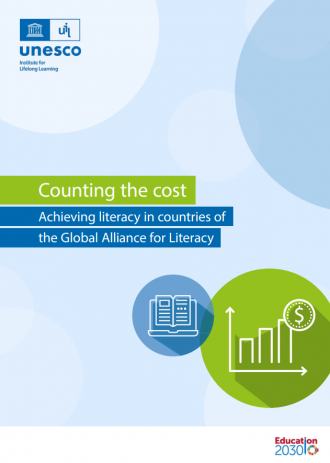This paper seeks to determine the cost of achieving Sustainable Development Goal 4 (SDG 4) Target
4.6: 'By 2030, ensure that all youth and a substantial proportion of adults, both men and women,
achieve literacy and numeracy'. In an effort to answer this question, UNESCO ran simulations and
identified the cost and funding gap for the 29 member countries of the Global Alliance for Literacy
within the Framework of Lifelong Learning (GAL). This paper argues that 739 million youth and adults
require additional literacy programmes of which 580 million are located in 9 of the 29 member
countries (the E-9 countries). Based on the results of the simulation, an estimated US$ 190 billion is
needed to achieve Target 4.6 by 2030 in the 29 GAL countries. The E-9 countries account for 80% of
this cost as the large majority of the global population of youth and adults who lack basic literacy
skills live in these territories. The estimation considers the impact of the COVID-19 crisis on GDP
growth and presents several scenarios for consideration. If the 29 member countries allocate the
recommended 3 per cent of their national education budget to youth and adult literacy, a funding
gap of US$ 17 billion will still remain. However, this gap is greater in the 20 non-E9 countries, which
account for US$ 12 billion of the funding gap. These 20 non-E9 countries already experience massive
challenges for investing in their public education system due to low economic growth and low
education development outcomes. A detailed description of the UNESCO GAL simulation model
used to estimate the total cost and identify the financing gap for the 29 countries is presented
to help interpret the results. The paper ends with a set of recommendations for governments
and the international community to work together and ensure the availability of lifelong learning
opportunities for all, especially those often left behind.
- Author/Editor: UIL
-
Counting the cost: achieving literacy in countries of the Global Alliance for Literacy
- UNESCO Institute for Lifelong Learning - 2021
- Available in: English, French




